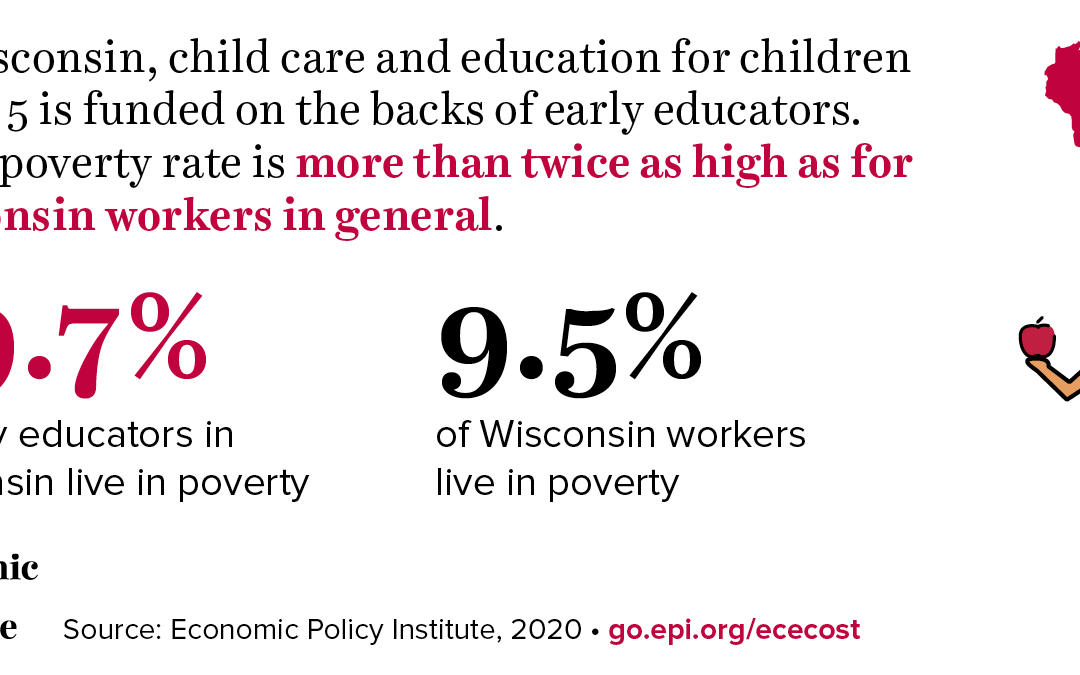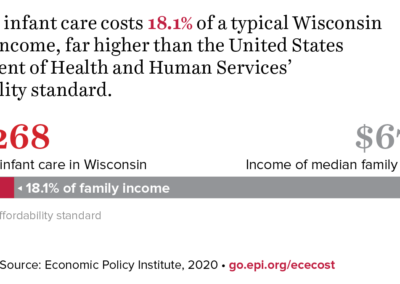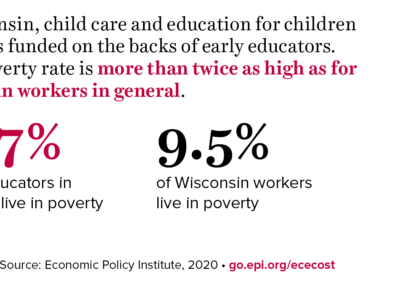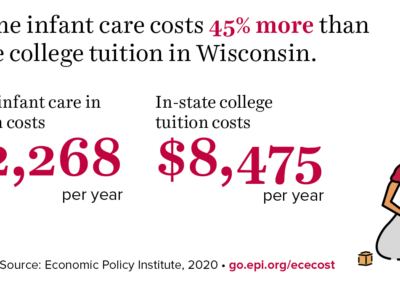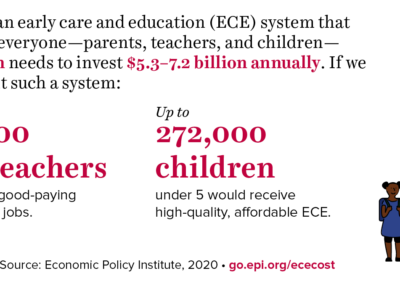By Paula Drew, WEESSN Dane Co. Project Manager
Public support has been growing for greater investments in early childhood. The private market of early care and education is failing children, teachers, parents, and employers. While this crisis has been building for decades, only now are we ready to start addressing what Gould and Blair (2020) call “the elephant in the room,” value-based funding. In a collaboration between the Economic Policy Institute and the Center for the Study of Child Care Employment, Gould and Blair recently released a paper titled, Who’s paying now? The explicit and implicit costs of the current early care and education system on the costs associated with an underfunded early care and education system. Parents pay too much or leave the workforce, which impacts lifetime earnings (especially mothers). Additionally, early educators (mainly women) work for low wages and turnover in the field is high. Low wages for the workforce and lost wages for parents reduce tax revenue for Wisconsin. What’s more, low wages for the workforce make quality care very difficult to achieve and the children who most need high quality early care and education are least likely to get it.
Although this probably isn’t news to anyone reading this blog, the fresh perspective in this new work comes from a set of corresponding state-specific reports that estimate the true cost of addressing both the supply and demand knots that exasperate inequities for children, families and early educators in each state of the US. For Wisconsin, Gould, Whitebook, Mokhiber, and Austin (2020) estimate $5.3 billion or 1.6% of Wisconsin’s GDP would be necessary to create the systematic change necessary to meet the current demand. This isn’t all brand new money though; there are already federal, state and local funding streams at play. Additionally, with strong interest from communities, businesses, county associations, medical home, houses of worship and even volunteer firefighters, it’s likely that new funding would not only come from public investments, but also from private and third sector funding. Everyone will reap the rewards of a fully funded early care and education system. Now that we have a solid estimate of what it will take, WECA staff are ready to roll up our sleeves and do the hard work of coalition building necessary to bring every available dollar to the table to make Wisconsin a better place to live, work and grow.
A values-based early care and education system would benefit children, parents, and teachers in Wisconsin by:
- Serving between 206,000 and 272,000 young children that will have the best start possible with access to high-quality early care and education;
- Building a strong early care workforce of between 85,000 to 115,000 highly-trained individuals that make a living wage and benefits commensurate with their colleagues working in K-12 education; and
- Creating a path to the middle-class for young families and early educators that add to a thriving Wisconsin.

